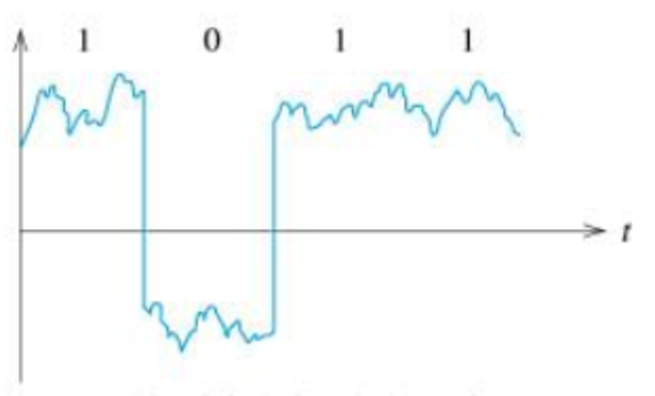
Main Difference
The main difference between Analog Signal and Digital Signal is that the Analog Signal is a Signal where the time-varying feature is an analogous representation of some other time-varying quantity and Digital Signal is a Signal used to represent data as a sequence of discrete values
-
Analog Signal
An analog signal is any continuous signal for which the time-varying feature (variable) of the signal is a representation of some other time-varying quantity, i.e., analogous to another time-varying signal. For example, in an analog audio signal, the instantaneous voltage of the signal varies continuously with the pressure of the sound waves. It differs from a digital signal, in which the continuous quantity is a representation of a sequence of discrete values which can only take on one of a finite number of values. The term analog signal usually refers to electrical signals; however, mechanical, pneumatic, hydraulic, human speech, and other systems may also convey or be considered analog signals.
-
Digital Signal
A digital signal is a signal that is being used to represent data as a sequence of discrete values; at any given time it can only take on, at most, one of a finite number of values. This contrasts with an analog signal, which represents continuous values; at any given time it represents a real number within a continuous range of values.
Simple digital signals represent information in discrete bands of analog levels. All levels within a band of values represent the same information state. In most digital circuits, the signal can have two possible valid values; this is called a binary signal or logic signal. They are represented by two voltage bands: one near a reference value (typically termed as ground or zero volts), and the other a value near the supply voltage. These correspond to the two values “zero” and “one” (or “false” and “true”) of the Boolean domain, so at any given time a binary signal represents one binary digit (bit). Because of this discretization, relatively small changes to the analog signal levels do not leave the discrete envelope, and as a result are ignored by signal state sensing circuitry. As a result, digital signals have noise immunity; electronic noise, provided it is not too great, will not affect digital circuits, whereas noise always degrades the operation of analog signals to some degree.Digital signals having more than two states are occasionally used; circuitry using such signals is called multivalued logic. For example, signals that can assume three possible states are called three-valued logic.
In a digital signal, the physical quantity representing the information may be a variable electric current or voltage, the intensity, phase or polarization of an optical or other electromagnetic field, acoustic pressure, the magnetization of a magnetic storage media, etcetera. Digital signals are used in all digital electronics, notably computing equipment and data transmission.
